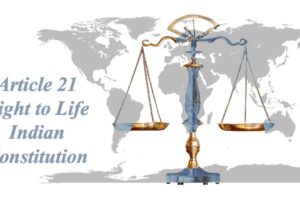
IMPORTANT FACTS OF THE INDIAN CONSTITUTION BENEFICIAL FOR LAW ASPIRANTS
The Indian Constitution is an extraordinary document that every Indian citizen should be aware of. As the Indian Constitution forms the foundation of each law aspirant from various Law Coaching in Jaipur education and career, it is actually of the greatest significance that they know.
Considering how difficult it is to understand the Indian Constitution, it is sense that students are unable to memorize every word and generate basic references at any given time. However, there are several sections of the constitution that one must be quite knowledgeable about in order to be able to practice law in India.
It includes some significant tidbits of information about the Indian Constitution that each prospective law aspirant at various Law Coaching in Jaipur ought to be aware of. The details of certain provisions and portions of the Constitution are included, along with some fascinating facts about it. It is essential reading for students who intend to pursue a legal education at the graduate level because it gives them a brief overview of the Indian constitution.
Most Important Factors to Remember: Law Aspirants
The Father of the Constitution and His Contribution
- Ambedkar chaired the committee in charge of drafting the Constitution, which was a significant undertaking.
- Dr. Ambedkar was in charge of introducing the draft constitution, responding to inquiries about it, and making the required amendments in accordance with the Constituent Assembly’s recommendations.
Original Draft of the Indian Constitution
- Both Hindi and English were incorporated in the original writing of the Indian Constitution.
- Two versions of the Constitution, one in Hindi and the other in English were signed by every member of the Constituent Assembly, the body that created it.
It is one of the Longest Constitution among Other Constitutions
- The world’s longest handwritten constitution belongs to a sovereign nation, India.
- It currently consists of 115 amendments, a Preamble, 22 parts comprising 448 articles, 12 schedules, as well as 5 appendices.
The Indian Constitution is Hand Written
- The Hindi and English copies of the Constitution were drafted by handwritten. The earth’s longest handwritten constitution is that of any nation.
- Prem Behari Narain Raizada wrote the Indian Constitution by hand in the beginning. It was penned with exquisite handwriting in a flowing italic font. Additionally, Shantiniketan artists Beohar Rammanohar Sinha as well as Nandalal Bose ornamented it.
Two Thousand Amendments had been made to the Original Draft and Constituent Assembly was held
- The draft of the Constitution was made available for discussion and debate prior to its adoption, and more than 2000 amendments went through before it was finalized.
- The Constituent Assembly, the first parliament of independent India, convened on December 9, 1946. The Constituent Assembly’s first president, or interim chairman of the assembly, was Dr. Sachchidananda Sinha.
Preamble of the Constitution
- India is proclaimed as a socialist, sovereign, secular, and democratic republic in the Preamble of the Constitution. a welfare state dedicated to guaranteeing individual freedom, equity, and justiceas well as for advancing national integrity, togetherness, and fraternity.
Fundamental Rights
- The Preamble of the Indian Constitution, which ensures social, economic, and political fairness for all of its residents, mentions the foundational principles of the document.
- Freedom of speech, of religion, and of worship; equality of standing and opportunity; and the encouragement of brotherhood while upholding the worth of each and every person.
Representation of National Emblem
- On January 26, 1950, the day India became a republic as well as its Constitution went into force, the National Emblem was chosen. In December 1947, the image of Ashoka’s Lion Capital was first chosen to serve as the Dominion of India’s insignia.
- However, the current iteration of the logo was formally adopted on January 26, 1950, the day India gained independence.
Constitution’s Basic Structure
- It was initially enacted in August 1935; the Government of India Act of 1935 is credited with being the longest Act ever adopted by the British Parliament at the time.
- The British Parliament introduced the 1935 Act as the second constitutional amendment to help India realize the goal of responsible governance.
Prospective aspirants from various institutes for Law Coaching in Jaipur must be aware of the unique features of the Constitution of India. One of the most hotly contested texts in Indian history is the Constitution. Nonetheless, other nations have also been motivated to adopt secular governance by the Indian Constitution.
Understanding the constitution conceptually will keep you ahead of the game when it comes to preparing. For students preparing for the CLAT and other law admission tests, the Constitution is also essential reading.



